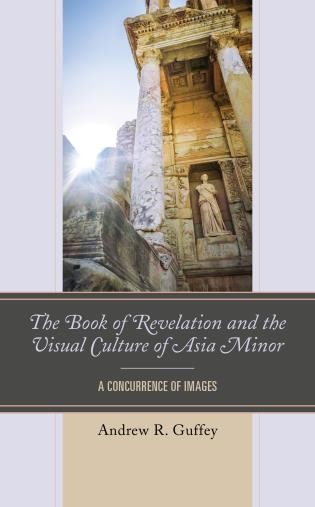The Book of Revelation and the Visual Culture of Asia Minor: A Concurrence of Images
The Rev. Andrew R. Guffey, Ph.D.
The book of Revelation is one of the most visually rich books of the Bible, and yet it is difficult to come to grips with its intense visuality. What are the “bizarre” images of the book doing? How ought we to go about understanding them? What are we to do with a work that sits on the very edge of textuality and visuality?
In The Book of Revelation and the Visual Culture of Asia Minor: A Concurrence of Images I set out to situate the visuality of the book of Revelation (its images) in the context of the visual world (both material and rhetorical) of Asia Minor. The notion of a “concurrence” of images, which I lifted from the renowned art historian Erwin Panofsky, helpfully deflects questions of “influence,” “borrowing,” or “sources,” and instead invites a recognition of a common cultural project. The images of the book of Revelation, I argue, are not borrowing from the visual culture of Asia Minor; rather they participate in it.
“The old method of the Apocalypse,” D. H. Lawrence, scathing critic of the Apocalypse, once wrote, “is to set forth the image, make a world, and then suddenly depart from this world in a cycle of time and movement and even, an epos; and then return again to a world not quite like the original one, but on another level” (Lawrence, Apocalypse, 97). Under the influence of another Anglican interpreter of the Apocalypse, Austin Farrer, I found myself asking about this world-making power of the images of the book of Revelation. “The book of Revelation,” Farrer wrote, “was the one great poem the first Christian age produced” (Farrer, A Rebirth of Images, 6). Whether or not we ought to call the Apocalypse of John a poem, Farrer’s insistence that the power of the book is in its images is almost certainly correct. Understanding those images and their power is a more difficult matter to unravel.
In concert with an increasing number of scholars, I look to ancient rhetoric and material culture to attempt the unraveling, most especially the rhetorical art of ekphrasis. Ekphrasis (vivid description) names a rhetorical device, but also a certain deployment of imagination. The description of persons, places, and events brings them within the realm of the visual, making them, as the ancient rhetorical handbooks said, “virtually present to the eyes” of the audience. The power of Revelation’s images is just this: in representing another divine world “not quite like the original one,” to use Lawrence’s language, they contest the representation of the gods and the divine world in the material culture of Asia Minor, through Farrer’s “rebirth of images.” The power of the program of images in the book of Revelation, as of ekphrasis, is to reorient the imagination. In the case of Revelation, it is to present the God of Israel, through Jesus Christ, as the principle power of the cosmos and of unfolding history, rather than the many visible gods that were etched in stone and coin. To make this argument concrete, I compare the visual rhetoric of Revelation with exempla from imperial numismatic iconography, the statuary of Artemis of Ephesos, and the so-called Great Altar of Pergamon.
In short, I find in the book of Revelation a tapestry of images that resonates with the visual culture of Asia Minor, if only to contest the world that visual culture represents. It is a project of unseeing one world, and showing an unseen world.
Andrew R. Guffey (Ph.D., The University of Virginia) is Priest-In-Charge of St. Mary’s In-The-Hills Episcopal Church, Lake Orion, Michigan. He currently teaches at the Lutheran School of Theology at Chicago (New Testament) and Oakland University (Religious Studies). He can be contacted at arguffey@gmail.com.

